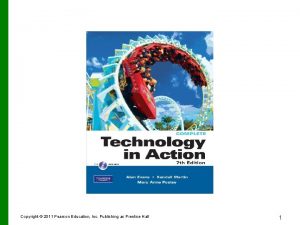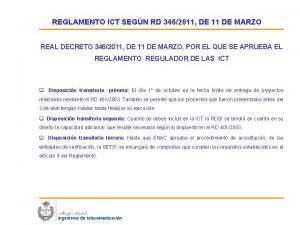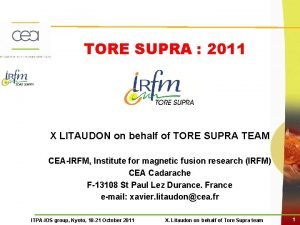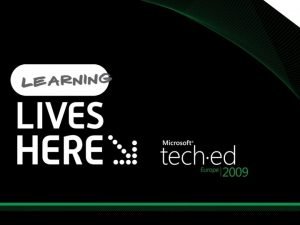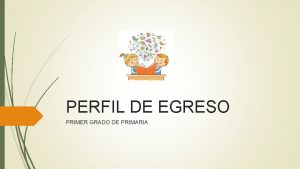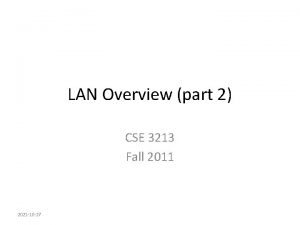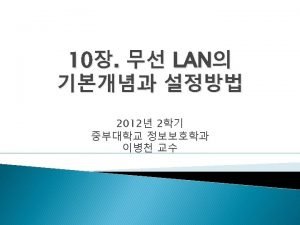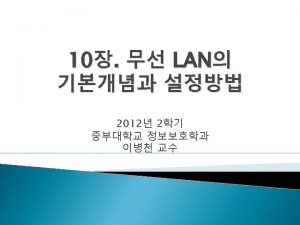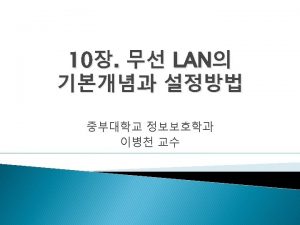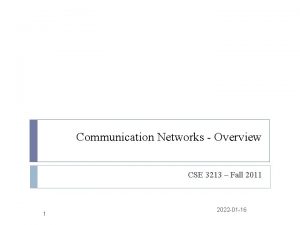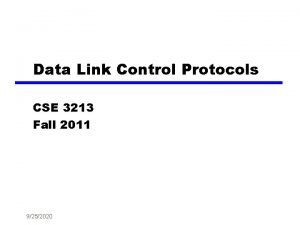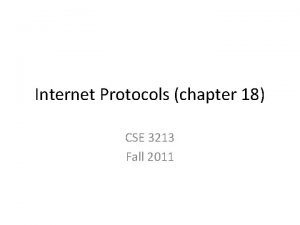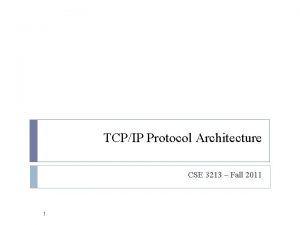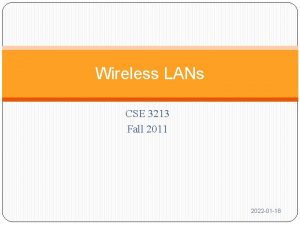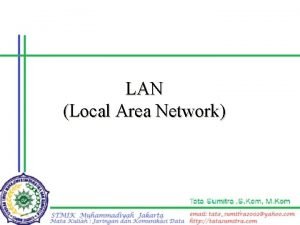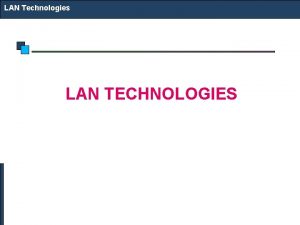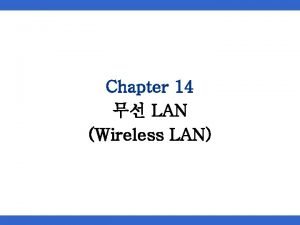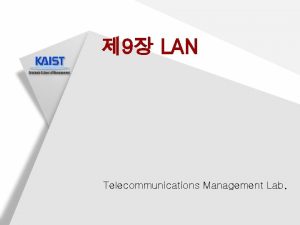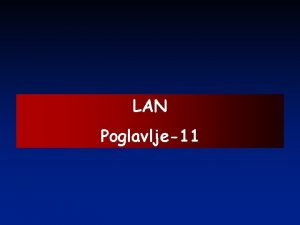LAN Overview 5 1 CSE 3213 Fall 2011















- Slides: 15

LAN Overview (5. 1) CSE 3213 Fall 2011 10/20/2021 4: 01 PM 1

Local Area Networks (LANs) Ø usually owned by the organization that is using the network to interconnect equipment Ø key elements: l topology l transmission medium l wiring layout l medium access control

LAN Topologies

Bus and Tree Bus: Tree: • stations attach through tap to bus • full duplex allows transmission and reception • transmission propagates throughout medium • heard by all stations • terminator at each end • a generalization of bus • branching cable with no closed loops • tree layout begins at headend and branches out • heard by all stations

Frame Transmission on Bus LAN

Ring Topology • a closed loop of repeaters joined by point-topoint links • receive data on one link & retransmit on another —links unidirectional —stations attach to repeaters • data transmitted in frames —circulate past all stations —destination recognizes address and copies frame —frame circulates back to source where it is removed • medium access control determines when a station can insert frame

Frame Transmission Ring LAN

Star Topology • each station connects to common central node —usually via two point-to-point link • one for transmission and one for reception central node • operate in broadcast fashion • physical star, logical bus • only one station can transmit at a time (hub) • can act as frame switch

Choice of Topology reliability —medium —wiring layout —access control factors: performance expandability

Bus LAN Transmission Media twisted pair • early LANs used voice grade cable • scaling up for higher data rates not practical baseband coaxial cable • uses digital signaling • original Ethernet cont…

Bus LAN Transmission Media (2) broadband coaxial cable • used in cable TV systems • analog signals at radio and TV frequencies • expensive, hard to install and maintain optical fiber • expensive taps • better alternatives available only use baseband coaxial cable has achieved widespread

Ring and Star Topologies Ring • very high speed links over long distances • potential of providing best throughput • single link or repeater failure disables network Star • uses natural layout of wiring in building • best for short distances • high data rates for small number of devices

Choice of Medium Ø constrained by LAN topology Ø capacity l to support the expected network traffic Ø reliability l to meet requirements for availability Ø types of data supported l tailored to the application Ø environmental scope l provide service over the range of environments

Media Available Voice grade unshielded twisted pair (UTP) Shielded twisted pair / baseband coaxial more expensive, higher data rates Cat 3 phone, cheap, low data rates Broadband cable even more expensive, higher data rate High performance UTP Cat 5+, very high data rates, suited for star topology Optical fibre security, high capacity, small size, high cost

Reading • Section 15. 1, Stallings’ book • Next time: Chapter 16 Ethernet 15
 Geb 3213
Geb 3213 Isco 08:3213
Isco 08:3213 2011 pearson education inc
2011 pearson education inc Haiku example
Haiku example Pergub 140 tahun 2011
Pergub 140 tahun 2011 Rd 346 2011
Rd 346 2011 Supra 2011
Supra 2011 Fitzpatrick sanders & worthen 2011
Fitzpatrick sanders & worthen 2011 Roman numbers 1-12
Roman numbers 1-12 2011 pearson education inc
2011 pearson education inc World kidney day 2011
World kidney day 2011 2011 pearson education inc
2011 pearson education inc Windows embedded standard 2011
Windows embedded standard 2011 Introduccion app inventor
Introduccion app inventor Perfil del niño de primer grado de primaria
Perfil del niño de primer grado de primaria Customer experience management conference 2010
Customer experience management conference 2010


